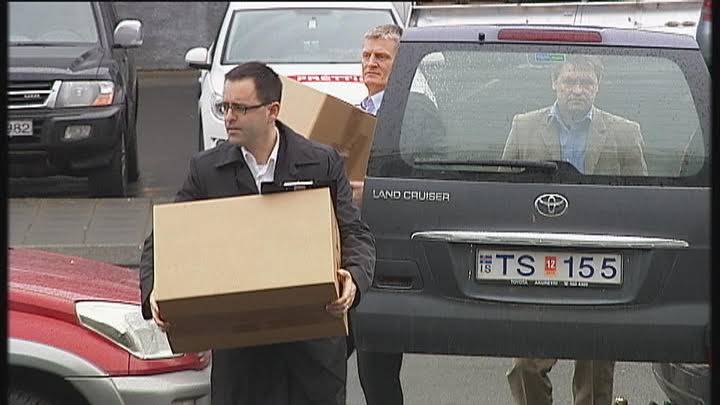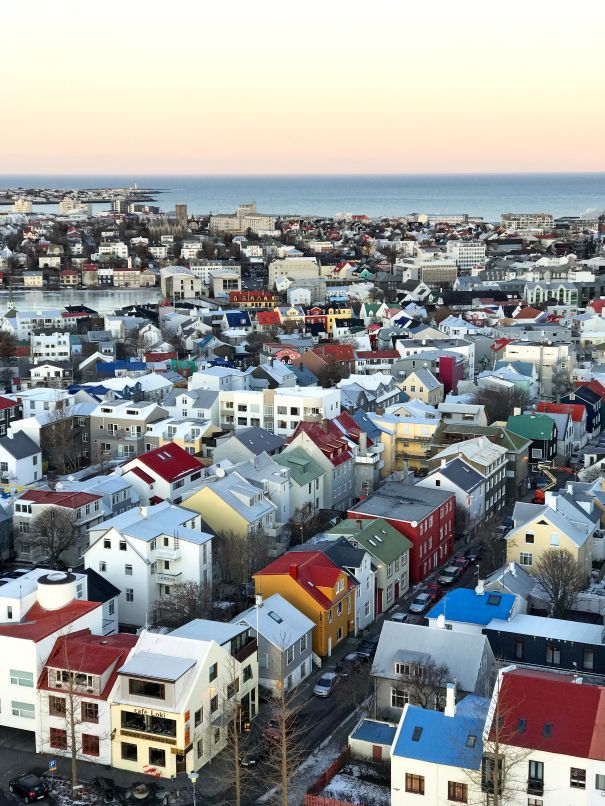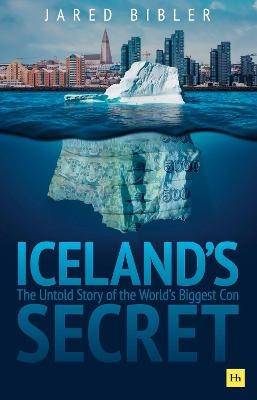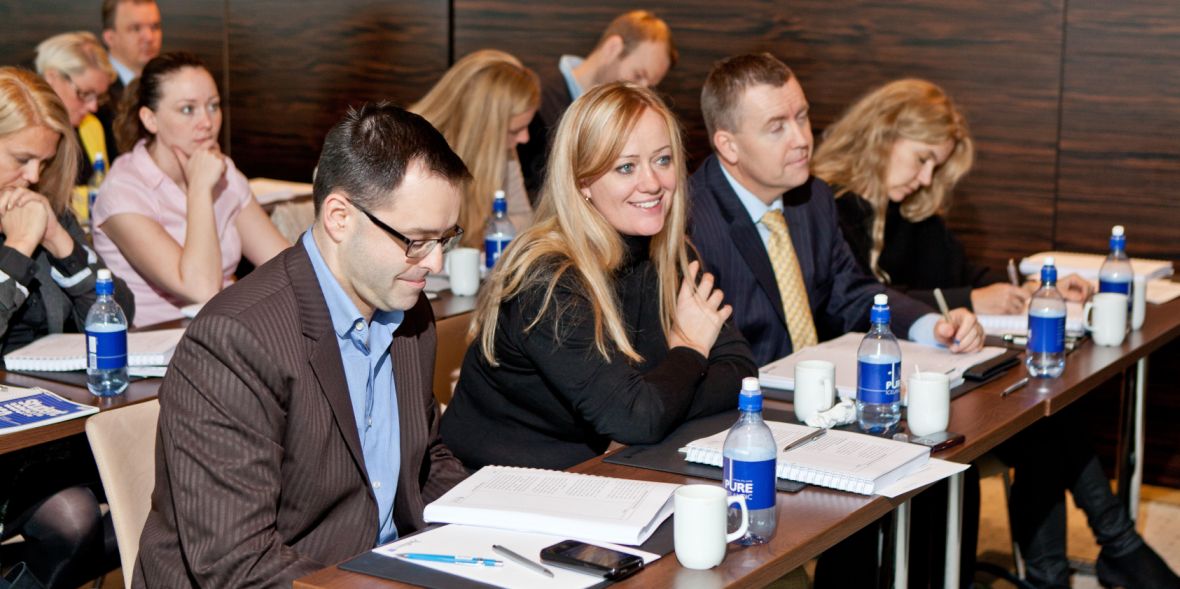Many Bitcoiners look forward to the day when the banking system collapses and the currency becomes hyper-Bitcoinized.
However, Jared Bibler, an American who lived through Iceland’s 2008 banking and stock market meltdown, says the reality is something no one wants to endure.
„It’s a severe nausea in the pit of your stomach that stays for months; that sense of ill-being persists,“ he explains. “Because it does not occur in a single day. It occurs gradually.”
As is the case with many in the crypto world today, Bibler felt alone in noticing the financial system’s ever-widening vulnerabilities in the run-up to the catastrophe. When it finally occurred, he admits to a misguided sense of pride.
“I was like, ‚Hey, fellas, the crash is about to happen! I’ve been warning you about this for several years,‘ he recalls thinking. “So, I was feeling a little pompous or something along those lines. However, I was unaware that in two days, pal, you’re going to be concerned about your ability to purchase food.'“
3 October 2008 — a run on the banks
Prof. Gylfi Magnússon goes on national news at noon, says the banks are bankrupt, we don’t have enough foreign currency for everyday goods. Icelanders respond by withdrawing 5.5 billion ISK in cash, 27x the normal amount for a Friday.
— Jared Bibler (@jared_bibler) October 3, 2021
Bibler, who later joined the Fjarmalaeftirlitid (FME) investigation into the collapse, had left his demanding Wall Street career in 2004 and relocated to the tiny country following a vacation. He eventually found work at one of the country’s largest banks, Landsbanki, and, in an odd turn of events, departed only days before all three main banks collapsed in October 2008.
Each was roughly the size of Enron, and the impact on the 350,000 population has been compared to the collapse of 300 major banks in a country the size of the United States. The stock market fell 97% from its 2007 high, while the national currency, the Krona, was half in value. Individuals began stockpiling items from supermarkets, and many were forced to queue for food aid.

“What if the money in your bank account right now could suddenly purchase you a tenth of what it does now? That occurred inside a week. What would your reaction be? ‚I am unable to travel overseas and am unable to purchase a car.'“
Bibler recalls the central bank’s chief warning: „If we don’t get a handle on this, we’re staring at thirty years of chaos in this country.“ And I believe he was correct; I believe we were a week away from a Mad Max-style situation,“ he says.
“In the kind of crash that we had with supermarket shelves going bare, and you’re not sure where your next meal is going to come from, and you’re not sure if the money in your wallet can buy anything the next morning, I think you’re pretty close to a real breakdown in society.”
Within months, inflation reached 14 percent per year, interest rates reached 15 percent, and the country’s gross domestic product (GDP) plummeted by 10 percent in real terms, plunging the country into a depression. The jobless rate more than quadrupled. Things went from bad to worse in the country that was ranked as the world’s most tranquil by the Global Peace Index.
In his words, „the attitude on the streets of Iceland was vengeful and a little frightening.“ „I was a little intimidated by it. The people that were down in front of the Parliament building every day were shouting, banging pots and pans and making a lot of noise – they were very, really pissed,“ says the author.
Why did the three largest banks in this little nation manage to expand their assets by 11 times the size of the GDP to the point where their failure threw the country into chaos? In his new book Iceland’s Secret: The Untold Story of the World’s Biggest Con, author Christian Bibler describes how the scam was perpetrated by a combination of greed, ineptitude, and plain deception.

The most peaceful country
Iceland is a strange and interesting destination to visit. Despite having just 350,000 people, it has everything a larger nation has including its own government, customs service, share market and industry. For many years, the economy was based on fishing and aluminum smelting, but after the banking system was deregulated in 2001, a large influx of foreign capital flooded in to help revitalize the economy. The banks went on a debt-fueled spending spree acquiring foreign real estate, fashion brands and soccer teams. When Icelandic (debt) became highly yielding, there was a tremendous demand for it, according to Bibler. „Icelandic (debt) became highly yielding,“ he adds.
“And these newly privatized banks, they were hungry to grow, they were super aggressive. So they grew almost like a pumpkin, overnight.”
Over a seven-year period, the banks‘ assets increased by a factor of twenty, and by the second quarter of 2008, the national debt had reached 50 billion euros, equivalent to 160,000 euros in debt for every man, woman, and child.
Nobody paid attention to the warning shots fired in 2006 studies from the International Monetary Fund and Merrill Lynch, which predicted a recession. The economy was booming, and the stock market was soaring at rates of up to 4 percent per month.
According to him, „It had been the poorest country in Europe for something like 1000 years.“ „And I believe they thought to themselves, „Now that we’ve made it, it’s okay as long as the sun shines.“
A most peculiar bank

The laid-back attitude and values that he had been drawn to were contrasted with the incompetence and laissez-faire attitude of his employees and Landsbanki, which he found horrifying.
The entire operation was based on manual data entry, and few employees were familiar with even the most basic principles, such as T+3 settlements (settling a securities trade within three days).
It was „sort of a complete pandemonium“ in his opinion, according to him on an internal level. Although Bibler was tasked with overseeing a 200 million euro hedge fund, the bank did not have a system in place to track the amount of cash the fund had on hand at any given point in time. According to him, the only way to accomplish this would be to make an Excel spreadsheet, then go and search up the figures in five or six different locations and copy and paste them.
In another instance, he recalls the salesmen using find and replace to change all references from Icelandic Krona to Euros in a fund brochure in order to attract German investors, despite the fact that the only reason the fund generated such high returns was because it was denominated in Icelandic Krona.
“It was just the Wild West.”
After three different instances of being directed by his manager to wire 5 million euros to an unknown bank account with no paperwork, he finally snapped and left the organization.
„As soon as I finished, they wanted me to send another five and then another five, which I completed within a few days. Consequently, we sent a total of 15 (million euro) without any supporting documents to an unknown account in Norway.“
His decision to leave came about after he learned second-hand that his manager’s boss had begun questioning him about the irregular transfers and that his manager had blamed him for the situation.
„My final day was Friday, October 3, and my bank went under the following Tuesday, October 7.“
3 October 2008 /6
IMF calls Iceland: we want to send a team there next week.
Meanwhile Kaupþing transfers ISK 10B ($88m) offshore to Marple.
And I work my final day at Landsbanki — the day of the cakes.
— Jared Bibler (@jared_bibler) October 3, 2021
The crisis unfolds
The financial world was jolted in mid-September 2008 by swiftly spreading contagion in financial markets. On Sept. 15, Lehman Brothers — the fourth-largest Wall Street bank — and old-fashioned stockbroker Merrill Lynch went bankrupt. The following day, AIG, the largest insurance company in the United States, went bankrupt; the following day, HBOS, the largest mortgage lender in the United States, went bankrupt.
Iceland’s banks collapsed like dominoes on October 6: Glitner, Landsbanki, and Kaupping. 90 percent of the financial industry defaulted in a single week, and unsurprisingly, there was a bank run, with 20 times the average amount removed. With the krona plummeting like a stone, Bibler flew to France on an emergency basis to withdraw as much euros as possible from ATMs.
As a result of quitting his employment days before the crash, he was ineligible for social security and his money were stuck in a high-interest fund.
It took six months to reclaim the funds.
“So we just didn’t even have access to the cash that we thought we had even in the local currency. So I only had maybe, in my regular bank account, maybe like 1000 bucks worth of local currency. So that was super scary.”
Due to the fact that the principal of a mortgage in Iceland is adjusted higher with inflation, the 20 percent equity he’d built up in his home with partner Hulda became worth less than nothing.
According to him, „that 80 percent loan value had suddenly risen to 110 percent or 120 percent,“ and they were obliged to find someone who was willing to take over the house and mortgage for free. „We basically handed them over to them both. We handed over the keys, the house, and the mortgage, and they just stole it all.“
In the novel, Bibler recalls how they were so destitute that they had to eat bjugur, which are horse-meat sausages that were boiled in water.
The smell, taste, and especially the texture of the large white gobs of horse fat that came out of the cut casing made it impossible for me to grin at her across the dinner table.“ The fact that we have reached the bottom of the barrel is a clear indication to me.“

The investigation
After six months on the job market, he was hired to work as part of a 16-member team at the Financial Supervisory Authority (FME), which was investigating the collapse. He spent the next two years piecing together the events of the previous year by following a trail of excel spreadsheets. In addition to his work at the Office of the Special Prosecutor in Reykjavik, he and his colleagues examined 30 criminal cases throughout their time there.
After a short period of time, it became evident that the banks had been engaged in major market fraud for approximately a decade. All three were purchasing their own shares on the stock market in order to keep the price of their own stock up. On a number of occasions, they were the single largest buyer in the market. Kaupping, the largest bank in the country, purchased $1.25 billion worth of its own stock in the year before it went bankrupt. It had a market capitalization of only $5 billion.
„I was taken aback. I didn’t believe it for a second. ‚I really didn’t want to believe it,“ he confesses.
“When I just saw these guys going in every day, buying up like literally sometimes 100% of the daily trading volume… and then going back years and seeing that behavior, this kind of shook my worldview quite a bit.”
 In order to conceal the massive stockpiles of shares, the banks formed fictitious shell corporations, to which they then lent even more money in order to purchase the shares.
In order to conceal the massive stockpiles of shares, the banks formed fictitious shell corporations, to which they then lent even more money in order to purchase the shares.
As long as they continued to borrow money from overseas and grow, they could continue to buy their own shares, allowing them to fix the price of the stock wherever they pleased. „It was a wonderful scam, really,“ says the author.
Due to the significant quantity of foreign investment in Iceland, the collapse became a big international crisis. Around 300,000 people in the United Kingdom were impacted, while local councils in the United Kingdom alone received 840 million pounds. The United Kingdom’s government used terrorism legislation to recoup billions of dollars.
Regrettably, but unfortunately, given Iceland’s tiny size and the well-connected architects of the scams, there was little willingness to bring the perpetrators to justice. By 2011, Bibler’s crew had been whittled down to only three individuals. The Icelandic general counsel informed him, „We no longer require you or this type of staff.“ Be not naive; the financial crime that occurred here occurred in 2008. It will never occur again.“
Bibler quit.
Justice denied
He’d naively expected the traders responsible would face long jail periods as he assumed the maximum six-year penalty would apply for each incident.
“I’m like these poor guys were doing this market abuse like 50 trades a day, 220 trading days a year and five years, I was thinking multiply each one of those by six years and they’re gonna be in prison for 1000 years or something.”
He was astonished to find prosecutors that thousands of incidents would be covered by a single charge — with a maximum penalty of a handful of years for the lot.

The prosecution of Kaupping was typical of the trials. Nine executives were charged with market abuse, and the evidence established unequivocally that they purchased 42% of total volume in the company’s own shares in Iceland between 2007 and 2008 and 31% of volume in Sweden.
Despite the magnitude of the crimes and the loss of 30,000 bank investors, only seven of the nine defendants were convicted in 2015 by the Reykjavik District Court and got terms ranging from zero to four and a half years in prison.
In total, 29 men and two women — CEOs and senior executives from the three largest banks and related institutions — were sentenced to 99 years in jail. This equates to an average of 3.2 years in prison for each individual convicted of offences ranging from insider trading to market manipulation.
The majority were released within a year of serving their sentences in Iceland’s magnificent white collar jail, Kviabryggja. „Through legislative modifications, already brief sentences became absurdly brief — and within months, they were back to flying helicopters and dining out with their spouses at Reykjavik’s best restaurants,“ Bibler writes.
Iceland’s Prime Minister was also found guilty of carelessness but was spared prison by a special court. He then became the ambassador of Iceland to the United States.
Bibler believes the punishments are excessive in comparison to the offences.
“I don’t get excited about putting people in jail. You know, I’m not into punishing people. But at the same time, the message that that sends is horrible.”
Bitcoin emerges
Bitcoin originated shortly after Iceland’s banking industry collapsed, and cryptocurrency mining grew to be a large industry as a result of dirt low rent and 100% renewable energy from geothermal and hydroelectric sources. According to some estimates, Iceland has mined 8% of all Bitcoin.
Bibler believes it is too early to determine whether blockchains‘ radical transparency may help minimize corruption.
“I think crypto is really in its infancy. I don’t know what it’s going to lead to. But I think there’s a lot of fascinating ideas and developments that will come out that I think we can’t predict. We’re in the era like when Netscape went public in 1994.”
“I think there’s something there, but I’m not sure what it is yet,” he adds.
However, he is certain that another collapse is imminent. He finishes the book by warning that Iceland’s financial catastrophe was precipitated by turning a blind eye to corruption in order to keep the financial machine running. He finishes the book with the following: „Despite the devastation of 2008, the dragon of severely corrupt financial markets has yet to be slain…
Iceland between 2004 and 2008 serves as a preview of future attractions for the world’s major markets. Today, we find ourselves in the equivalent of the 1930s, convinced that the Great War is finished…
We mistakenly refer to 2008 as the Global Financial Crisis, as if there will only be only one, despite the fact that GFC II is virtually probably on the horizon.
We are standing on the verge of a time bomb.”
Just before the interview concludes, we make a joke about how the impending financial collapse may force both of us to eat horse meat sausages again.
“Oh Jesus, I hope not,” he laughs. “One time in my life was enough.”
ICELAND’S SECRET: The Untold Story Of the World’s Biggest Con is out October 5.























